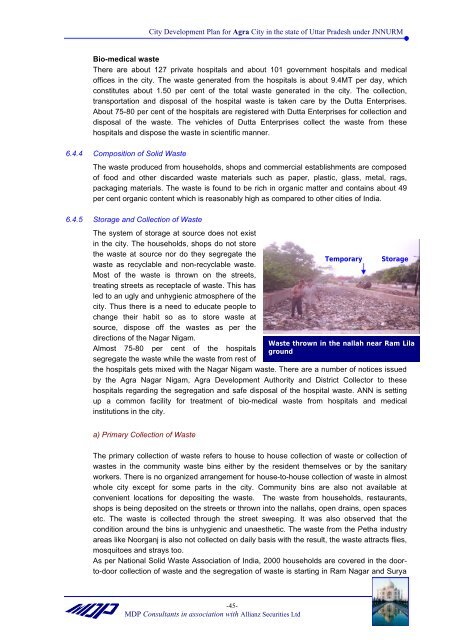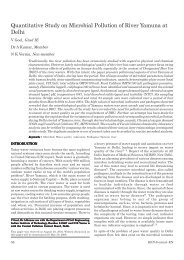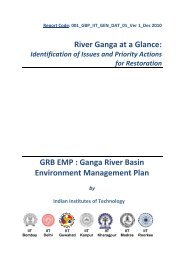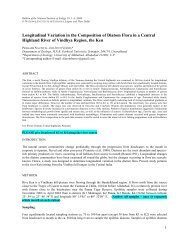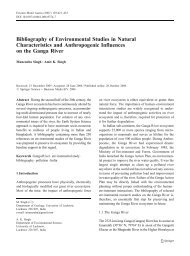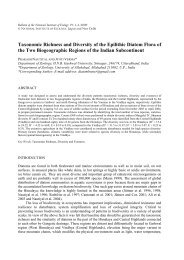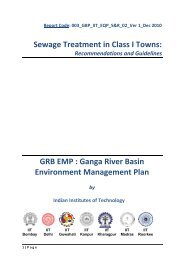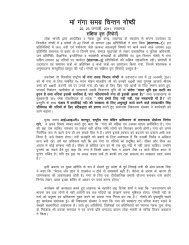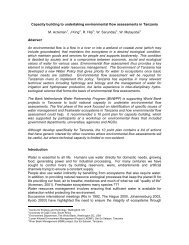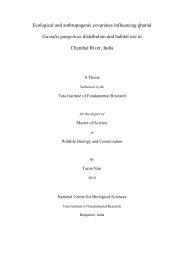JNNURM - GANGAPEDIA
JNNURM - GANGAPEDIA
JNNURM - GANGAPEDIA
Create successful ePaper yourself
Turn your PDF publications into a flip-book with our unique Google optimized e-Paper software.
City Development Plan for Agra City in the state of Uttar Pradesh under <strong>JNNURM</strong><br />
Bio-medical waste<br />
There are about 127 private hospitals and about 101 government hospitals and medical<br />
offices in the city. The waste generated from the hospitals is about 9.4MT per day, which<br />
constitutes about 1.50 per cent of the total waste generated in the city. The collection,<br />
transportation and disposal of the hospital waste is taken care by the Dutta Enterprises.<br />
About 75-80 per cent of the hospitals are registered with Dutta Enterprises for collection and<br />
disposal of the waste. The vehicles of Dutta Enterprises collect the waste from these<br />
hospitals and dispose the waste in scientific manner.<br />
6.4.4 Composition of Solid Waste<br />
The waste produced from households, shops and commercial establishments are composed<br />
of food and other discarded waste materials such as paper, plastic, glass, metal, rags,<br />
packaging materials. The waste is found to be rich in organic matter and contains about 49<br />
per cent organic content which is reasonably high as compared to other cities of India.<br />
6.4.5 Storage and Collection of Waste<br />
The system of storage at source does not exist<br />
in the city. The households, shops do not store<br />
the waste at source nor do they segregate the<br />
waste as recyclable and non-recyclable waste.<br />
Most of the waste is thrown on the streets,<br />
treating streets as receptacle of waste. This has<br />
led to an ugly and unhygienic atmosphere of the<br />
city. Thus there is a need to educate people to<br />
change their habit so as to store waste at<br />
source, dispose off the wastes as per the<br />
directions of the Nagar Nigam.<br />
Almost 75-80 per cent of the hospitals<br />
segregate the waste while the waste from rest of<br />
the hospitals gets mixed with the Nagar Nigam waste. There are a number of notices issued<br />
by the Agra Nagar Nigam, Agra Development Authority and District Collector to these<br />
hospitals regarding the segregation and safe disposal of the hospital waste. ANN is setting<br />
up a common facility for treatment of bio-medical waste from hospitals and medical<br />
institutions in the city.<br />
a) Primary Collection of Waste<br />
The primary collection of waste refers to house to house collection of waste or collection of<br />
wastes in the community waste bins either by the resident themselves or by the sanitary<br />
workers. There is no organized arrangement for house-to-house collection of waste in almost<br />
whole city except for some parts in the city. Community bins are also not available at<br />
convenient locations for depositing the waste. The waste from households, restaurants,<br />
shops is being deposited on the streets or thrown into the nallahs, open drains, open spaces<br />
etc. The waste is collected through the street sweeping. It was also observed that the<br />
condition around the bins is unhygienic and unaesthetic. The waste from the Petha industry<br />
areas like Noorganj is also not collected on daily basis with the result, the waste attracts flies,<br />
mosquitoes and strays too.<br />
As per National Solid Waste Association of India, 2000 households are covered in the doorto-door<br />
collection of waste and the segregation of waste is starting in Ram Nagar and Surya<br />
-45-<br />
MDP Consultants in association with Allianz Securities Ltd<br />
Temporary Storage<br />
Point<br />
Waste thrown in the nallah near Ram Lila<br />
ground


